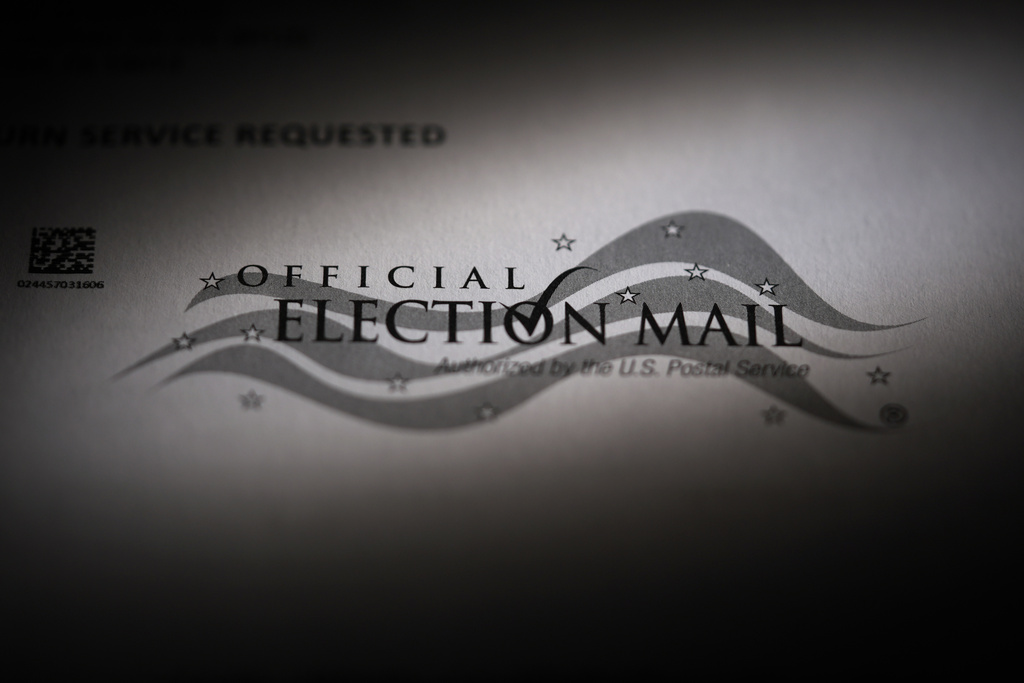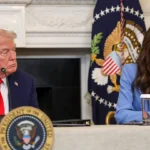Russian Video Claims Destroyed Trump Ballots in Pennsylvania \ Newslooks \ Washington DC \ Mary Sidiqi \ Evening Edition \ A video falsely claiming to show Pennsylvania election officials destroying mail-in ballots for former President Donald Trump was traced to Russian disinformation efforts, U.S. officials said Friday. The video quickly spread on social media, prompting U.S. intelligence and cybersecurity agencies to release a statement identifying it as a Russian attempt to undermine trust in the U.S. election process.
Russian Disinformation Targeting U.S. Mail-In Ballots: What Happened
- Video Circulation: Video falsely depicting destroyed Trump ballots goes viral.
- Quick Fact-Check: Bucks County election officials debunked the video in hours.
- Source Identified: U.S. intelligence ties video to Russian disinformation network.
- Public Safeguards: Officials reassure voters on election security and counter false claims.
- Bipartisan Response: Both local Republicans and Democrats condemn the video.
Deep Look
The FBI, the Office of the Director of National Intelligence (ODNI), and the Cybersecurity and Infrastructure Security Agency (CISA) issued a joint statement describing the video as a fabricated effort by Russian actors to undermine the integrity of U.S. elections. Officials noted that this kind of disinformation aligns with Moscow’s attempts to fuel divisions among Americans and cast doubt on the country’s electoral process. “This video is part of Moscow’s broader effort to raise unfounded questions about the integrity of the U.S. election and stoke divisions among Americans,” the statement read.
Swift Debunking and Transparency from Local Officials
As the video spread Thursday, cries of election fraud echoed across social media, particularly among those skeptical of mail-in ballots. However, Bucks County election officials were quick to respond, publicly refuting the video’s authenticity within hours. The board emphasized that the envelopes and materials shown were not issued by the Bucks County Board of Elections, and several details in the video were inconsistent with legitimate Pennsylvania ballots.
The swift action reflects the extensive preparation by local election officials who have been countering misinformation and ensuring election transparency. Since 2020, heightened concerns around election integrity have led state and local officials to adopt robust misinformation countermeasures, including proactive fact-checks, public transparency initiatives, and collaborations with law enforcement. The rapid debunking of the Bucks County video demonstrates the effectiveness of these efforts.
Following the video’s exposure as fake, it was removed by the user who initially posted it. However, disinformation experts warn that this incident is part of a larger pattern of misinformation that is expected to intensify as the election nears. Darren Linvill, co-director of the Media Forensics Hub at Clemson University, said the video likely originated from a Russian network known as Storm-1516 or CopyCop, which has spread similar false narratives in recent months. Linvill noted that this network’s videos often follow a distinct format, using actors intended to provoke racial and cultural tensions among U.S. audiences.
Growing Concerns Over Disinformation Tactics
Experts studying Russian disinformation strategies, including Josephine Lukito, an assistant professor of journalism at the University of Texas at Austin, point to the intentional use of actors in the video as a method of amplifying racial and social divides in the U.S. The video, featuring a Black actor, follows a pattern observed in Russian disinformation campaigns, which often employ racialized narratives to provoke existing tensions. “Russian disinformation absolutely exploits these divides, often using actors that amplify racial or cultural biases,” Lukito explained.
This incident is one of several in which election officials’ proactive strategies have countered false narratives in real-time. For instance, in New Hampshire earlier this year, authorities responded quickly to AI-generated robocalls targeting Democratic voters just before the state’s primary, leading to investigations, criminal charges, and fines against the perpetrators. As the 2024 election approaches, election officials across the country remain vigilant, prepared to address these incidents through transparent communication and collaboration with law enforcement.
Bipartisan Condemnation and Reassurance for Voters
Officials in Bucks County, where the false video was reportedly filmed, expressed bipartisan outrage over the disinformation attempt, noting the damaging effect it could have on voter confidence. The Bucks County Republican Committee condemned the video, describing it as “disinformation aimed at scaring voters and dissuading them from using mail-in ballots.” Similarly, Pennsylvania State Senator Steve Santarsiero, chair of the Bucks County Democratic Committee, called the video an attempt to discredit mail-in voting and potentially undermine confidence in the upcoming presidential election.
Bucks County District Attorney Jennifer Schorn emphasized the importance of public vigilance and transparent communication in combating election-related misinformation. She reported that her office, along with the Yardley Borough Police Department, had quickly reviewed and confirmed the video’s inauthenticity. Schorn also noted that her office has dedicated personnel to monitor and address any election-related misinformation that could surface as Election Day approaches, adding that the incident reassured her about the effectiveness of the county’s protocols.
“People spoke up, and officials acted,” Schorn said, expressing optimism that such vigilance will continue to safeguard the election process. “I don’t blame Americans for wanting reassurance about election security, especially when criminal entities actively work to undermine it. I felt reassured yesterday—it worked as it was supposed to.”
Election Safeguards and the Path Ahead
With the prevalence of election-related misinformation on the rise, election officials are not only bolstering security measures but also working to educate the public on how to identify false information. Many states have increased public access to voting processes, offering open tours and media briefings to preemptively counter conspiracy theories about ballot integrity. Election officials in counties like Bucks have also introduced new transparency measures, allowing public observers and media outlets to witness the ballot-counting process, hoping to reassure voters.
As Election Day nears, U.S. intelligence and cybersecurity agencies remain on high alert, monitoring foreign and domestic actors who seek to interfere with the electoral process. The recent statement from ODNI, FBI, and CISA underscores the importance of a unified approach to combat disinformation and protect American democracy. These agencies continue to collaborate with social media platforms to identify and remove harmful content, while also encouraging the public to rely on official sources for accurate election information.
Analysts and disinformation experts predict an increase in similar disinformation efforts as the election approaches, warning voters to scrutinize content carefully and consult trusted news and government sources. Voter education initiatives also play a key role in preparing citizens to recognize misleading claims, empowering them to seek out factual information from verified sources.
Conclusion: Protecting Voter Confidence Amid Disinformation
As voters prepare to cast their ballots, both election officials and cybersecurity agencies remain vigilant against threats to the electoral process. By emphasizing truth, transparency, and resilience, these efforts aim to shield American democracy from foreign and domestic attempts to undermine its legitimacy. The public’s role in safeguarding election integrity is crucial, with citizens encouraged to rely on verified sources, report suspicious information, and approach election content with caution.







